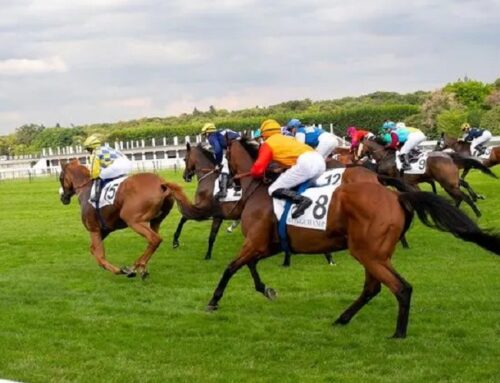
 The Road to Longines Breeder for 2022
The Road to Longines Breeder for 2022
Horse racing, the sport of running fast, especially Thoroughbred horses with a jockey or Standardbred with a horse pulling a carriage with a chauffeur. These two types of races are called flat racing and flat racing, respectively. Some flat races involve jumping. This article is limited to Thoroughbred races in the flat without hops. The race on the flat with horses other than thoroughbreds is described in the article Quarter Horse Racing.[expander_maker id=”1″ ]
Horse racing is one of the oldest sports, and its basic concept has not changed over the centuries. It has evolved from a rudimentary competition for speed or endurance between two horses to a spectacle involving large fields of runners, sophisticated electronic monitoring equipment, and huge sums of money, but its primary advantage has always been the same: the horse that finishes first is the winner. In the modern era, horse racing has evolved from transforming the category of entertainment into a huge business of public entertainment. But by the early decades of the twenty-first century, the popularity of the sport had shrunk dramatically.
Organized Racing Horse
Charles II (1660–1685) became known as the “Father of English Turf” and opened the King’s Paintings, the races in which prizes were awarded to the winners. His articles on these races were the earliest rules of national racing. The horses were six years old and carried 168 lb (76 kg), and the winner was the first to win two 4 mile (6.4 km) runs. The patronage of Charles II established Newmarket as the seat of the English races.
In France, the first documented horse race was held in 1651 as the result of a bet between two nobles. Under Louis XIV (1643-1715), racing based on gambling was prevalent. Louis XVI (1774-1793) organized a club of jockeys and established the rules of racing by royal decree that included the requirement for certificates of origin for horses and the imposition of additional weight on foreign horses.
Organized racing in North America began with the British occupation of New Amsterdam (now New York City) in 1664. Colonel Richard Nichols, commander of the British forces, established organized races in the colonies by setting a two-mile (3.2 km) course on the plains of Long Island (called Newmarket after the British Racecourse) and presents a Silver Cup for Best Horses in the Spring and Autumn seasons. From the beginning, and continuing until the Civil War, the hallmark of Thoroughbred American horses was stamina, not speed. After the Civil War, speed became the goal and the British system the model.
Open field racing
By the mid-18th century, the demand for more public racing led to open events with larger fields for runners. Eligibility rules are developed based on age, gender, place of birth, previous performance of horses, and qualifications of jockeys. Races whose owners were jockeys (gentlemen knights) were established, where the field was geographically restricted to a town or county, and only horses that had not won more than a certain amount were entered. An act of the British Parliament in 1740 stipulated that horses entered must be the bona fide property of their owners, thus forbidding “ring-wishers”, the fraudulent entry of superior horses against inferior horses; Horses must be age certified; And there were penalties for rough riding.
Contemporary accounts have identified jockeys (in England they are called jockeys – if they are professional – from the second half of the 17th century onwards in French races), but their names are not officially recorded at first. Only the winning coaches and jockeys were initially recorded in the racing calendar, but by the late 1850s they were all named. This neglect is explained by the riders in part in that when races consisted of 4 miles, with the two qualifying wins needed to win, the individual jockey’s judgment and skill were not vital. When lunge (single heat) races became the norm, a few yards in the race gained importance, and thus, the rider’s skill and judgment increased in convincing this advantage of his horse.
Evolution of Racing
The original King’s Plates were standard races – all were for six-year-old horses carrying 168 pounds in the 4-mile qualifying, and the horse had to win two rounds to be judged the winner. Beginning in 1751, five-year-olds carrying 140 pounds (63.5 kg) and four-year-olds carrying 126 pounds (57 kg) were accepted into the king’s bowls, and temperatures were lowered to two miles (3.2 km). The other race for four-year-olds was well established by then, the one for three-year-olds carrying 112 pounds (51 kg) in a single 3-mile (4.8 km) heat run in 1731. The four-year-old heat race continued in the States United States until the sixties of the nineteenth century. By then, dash racing had long overshadowed heat races in Europe, and a “dash” is any race decided by only one heat, regardless of distance.[/expander_maker]
About the author : Roman
Latest videos
Join our mailing list today
Insider offers & flash sales in your inbox every week.
Curabitur non nulla sit amet nisl tempus convallis quis ac lectus dolor sit amet, consectetur adipiscing elit sed porttitor lectus.





